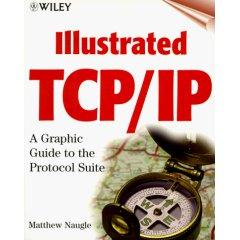| 2020ok Directory of FREE Online Books and FREE eBooks |
Free eBooks > Computers & Internet > Certification Central > Subjects > Networking > TCP/IP illustrated (Russian translation)
TCP/IP illustrated (Russian translation)by Matthew Naugle  Download Book If you are the author or the publisher, and would like to link to your site here, please contact us. About Book Amazon.com Nothing happens on the Internet without the underlying collection of network protocols--the TCP/IP stack--playing a role. If you're looking to increase your networking knowledge--and your marketability--by becoming familiar with TCP/IP, take a look at Illustrated TCP/IP for an orientation. In his coverage of IP, Matthew Naugle explains IPv4 and IPv6, along with the protocols that facilitate routing and other interactions among IP hosts (including Routing Information Protocol [RIP], Open Shortest Path First [OSPF], and Internet Control Message Protocol [ICMP]). Naugle covers Transport Control Protocol (TCP) and User Datagram Protocol (UDP) and offers information on the software that has grown up around the TCP/IP suite (including FTP, DNS, and SMTP). This series of short articles provides overviews of IP addresses and subnetting, explains key relationships among the TCP/IP technologies, and overall, represents a good way to gain basic familiarity with the essential Internet communications standards and related applications. You'll be ready for environment-specific guides after you work through this book. --David Wall
Illustrated TCP/IP Whether you're adding new TCP/IP applications to your office suite or migrating from IPv4 to IPv6, Illustrated TCP/IP gives you instant access to the detailed information you need—in a unique quick-reference format. Each topic is concisely explained on a large-format page, with a PowerPoint slide graphic to illustrate key concepts. Matt Naugle covers all the bases, including:
The CD-ROM supplies you with: PowerPoint slides of the illustrations in the book that you can use in your presentations, seminars, and reports.
Related Free eBooks
| Related Tags |












SEND A COMMENT
PLEASE READ: All comments must be approved before appearing in the thread; time and space constraints prevent all comments from appearing. We will only approve comments that are directly related to the article, use appropriate language and are not attacking the comments of others.